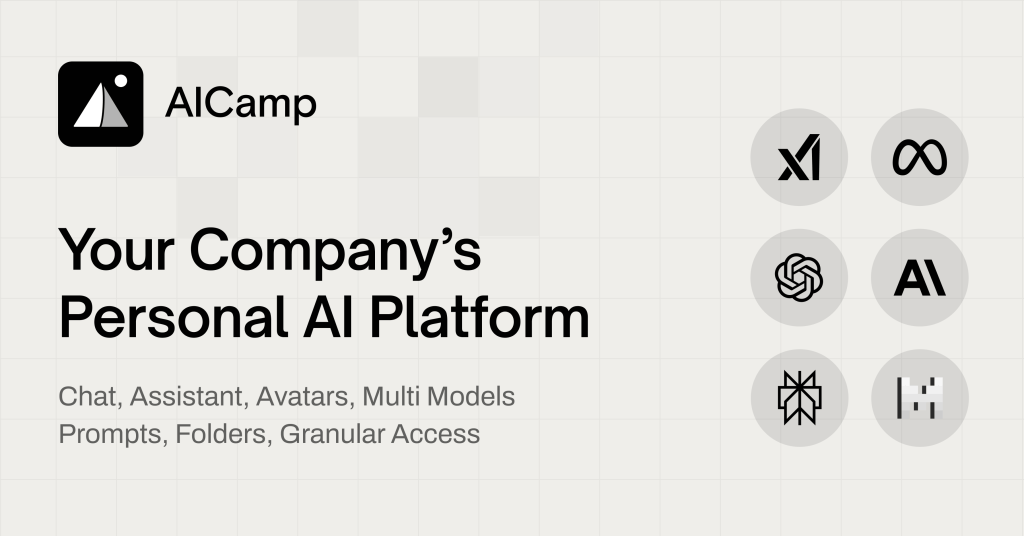Generative AI (GenAI) is transforming finance, making processes faster, smarter, and more efficient. From risk management to personalized customer services, financial institutions are leveraging AI to cut costs, improve accuracy, and enhance decision-making. Here’s what you need to know:
- 65% of financial reporting leaders already use AI in workflows, with 71% planning to expand its use.
- Applications include fraud detection, credit assessment, trading platforms, and tailored financial advice.
- Companies like Goldman Sachs and RBC Capital are leading the way with AI-driven strategies and tools.
- Challenges, like legacy systems and ethical concerns, require careful planning and governance.
Key benefits of GenAI in finance include:
- Efficiency: Automates repetitive tasks.
- Accuracy: Enhances reporting and decision-making.
- Cost Savings: Reduces operational expenses.
- Customer Experience: Delivers personalized services.
GenAI is not just a tool – it’s reshaping how financial institutions operate, innovate, and compete in a digital-first world.
Harnessing Generative AI Workflows in the Finance Industry
GenAI’s Role in Financial Operations
Generative AI is reshaping how financial institutions handle their core operations, spanning various areas of the industry.
Enhancing Risk Management and Fraud Detection
Take Wells Fargo‘s Predictive Banking Feature as an example. It uses real-time customer data analysis to spot potential risks and detect fraud during transactions [1].
Here’s how GenAI is making an impact in risk management:
| Risk Management Area | GenAI Application | Business Impact |
|---|---|---|
| Credit Assessment | Analyzing financial statements and economic trends | Improved accuracy in evaluating credit risks |
| Fraud Prevention | Monitoring transactions in real time | Faster action against suspicious activities |
| Market Risk | Identifying patterns in market data | Better management of investment risks |
But GenAI isn’t just about managing risks. It’s also changing how financial institutions interact with their customers.
Personalizing Customer Experiences
Generative AI is redefining customer service by offering tailored solutions. By analyzing financial goals, spending habits, and risk profiles, it delivers highly customized recommendations [1][2].
| Service Area | Implementation | Customer Benefit |
|---|---|---|
| Financial Advisory | AI-powered portfolio analysis | Tailored investment strategies |
| Product Recommendations | Behavioral data analysis | Suggestions for relevant financial products |
| Budget Planning | Recognizing spending trends | Personalized savings plans |
Streamlining Back-Office Operations
One of the most noticeable changes is in back-office tasks. With 65% of financial reporting leaders already using GenAI in workflows [3], processes like compliance checks, document handling, real-time reporting, and data visualization are becoming faster and more efficient.
These developments show that GenAI is not just improving specific tasks – it’s transforming the way financial systems operate as a whole.
Using GenAI in Financial Organizations
Selecting AI Tools and Platforms
For financial organizations, choosing the right AI tools means prioritizing security, scalability, and smooth integration with current systems. It’s crucial to evaluate platforms that not only meet financial service needs but also uphold strict data protection protocols.
| Selection Criteria | Key Considerations | Business Impact |
|---|---|---|
| Data Security | Encryption protocols, access controls | Safeguards sensitive financial data |
| Integration | Compatibility with existing systems | Simplifies workflow processes |
| Scalability | Ability to handle growing data volumes | Ensures readiness for future demands |
Take AICamp as an example. It gives financial teams centralized access to top-tier AI models while focusing on role-based access and in-depth usage analytics. This combination helps maintain governance and scale AI across multiple departments.
Overcoming Implementation Challenges
KPMG reports that 65% of financial reporting leaders are already using AI in their workflows [3]. However, achieving success requires addressing some common challenges:
| Challenge | Solution | Example |
|---|---|---|
| Legacy Systems | Gradual integration with modern systems | RBC Capital’s adaptation of an AI-driven trading platform |
| Ethical Concerns | Establish clear AI governance frameworks | Incorporating CCPA compliance for data privacy |
By tackling these issues, financial organizations can maximize the benefits of GenAI, driving both innovation and operational efficiency.
Training Teams for AI Use
Successful AI adoption depends heavily on training teams to use these tools effectively. Financial institutions need to focus on building technical expertise and ensuring ethical use of AI.
Key steps to enhance AI adoption include:
- Designing structured training programs for data analysis and interpretation
- Establishing clear guidelines for managing AI systems
- Offering ongoing training on ethical AI practices
With nearly half of financial institutions already embracing AI, investing in team training is critical to staying competitive. By equipping employees with the right skills, organizations can fully harness the power of GenAI and position themselves for future growth.

The Future of GenAI in Finance
New Trends in GenAI for Finance
Multi-modal AI models are reshaping the finance industry by processing text, images, and audio at the same time. This allows for more detailed market sentiment analysis and deeper insights. For example, Goldman Sachs has implemented GenAI across various investment strategies and risk management projects, showcasing its potential [1].
| Technology | Use Case | Impact on Business |
|---|---|---|
| Multi-modal AI | Market sentiment analysis | Better predictions |
| Quantum-AI Integration | Portfolio optimization | Improved risk analysis |
| Advanced Language Models | Financial reporting | More efficient operations |
These technologies are not just improving current processes – they’re laying the groundwork for long-term changes in how financial services operate.
Long-Term Effects on Financial Services
GenAI is changing how financial institutions manage operations and serve clients. Its influence spans areas like financial management and customer interaction, pushing traditional methods into a new era.
| Area of Impact | Current Approach | Future Direction |
|---|---|---|
| Customer Experience | Limited personalization | Highly tailored financial advice |
| Risk Management | Rule-based systems | Real-time, adaptive assessments |
| Operational Efficiency | Partial automation | Fully automated processes |
Quantum computing is also being explored alongside GenAI, offering potential advancements in financial modeling and risk evaluation. Together, these technologies enable real-time data analysis for precise market predictions and risk management.
“The integration of GenAI in finance can help in detecting fraudulent activities, optimizing portfolios, and forecasting financial data with unprecedented accuracy” [1].
Investment firms are leveraging AI to analyze market trends from diverse data sources. A great example is RBC Capital’s AI-based trading platform, which helps institutions respond quickly to market changes while maintaining high execution standards [1].
Looking ahead, collaborative AI platforms are expected to play a bigger role. Platforms like AICamp are centralizing AI tools while ensuring compliance and security. This trend suggests a future where financial institutions can efficiently scale their AI operations across departments without sacrificing governance.
Conclusion: The Role of GenAI in Finance
GenAI has become essential for financial institutions aiming to remain competitive. Its integration is transforming the industry by improving processes, reducing costs, and elevating customer experiences. According to McKinsey, this technology could add between $200 billion and $340 billion annually to the banking sector through productivity gains alone.
| Impact Area | Current Value | Future Potential |
|---|---|---|
| Operational Cost Reduction | Up to 22% savings | $1 trillion by 2030 |
| Productivity Improvement | 13.8% more customer inquiries handled | Up to 500% with integrated processes |
Major players like Morgan Stanley, HSBC, and JPMorgan Chase are already leveraging GenAI to achieve cost savings, streamline operations, and enhance advisor performance. Platforms such as AICamp are helping financial institutions scale AI initiatives effectively, maintaining governance while boosting productivity by as much as 126%.
“Traditional ROI calculations fail to capture AI’s wide-ranging impact”, says Erik Brynjolfsson, emphasizing the need for financial institutions to think beyond immediate cost reductions [1].
The numbers speak for themselves. A report by Accenture shows that 77% of financial executives now consider AI crucial for business transformation. With the industry set to invest $84.99 billion in GenAI by 2030, the time to act is now. Institutions that integrate GenAI into their operations will set the pace in customer experience, innovation, and long-term growth in an increasingly digital world.
As GenAI advances, its influence on the financial sector will only expand, reshaping how organizations operate and compete. Those who adopt this technology today will be better equipped to tackle future challenges and seize emerging opportunities.
FAQs
How do finance teams use AI?
With GenAI transforming the financial sector, many wonder how finance teams are applying this technology in their day-to-day operations. Here’s a closer look:
| Application Area | What It Does | Example in Action |
|---|---|---|
| Data Analytics | Automates trend analysis, provides real-time insights | Predictive models for market trends |
| Risk Management | Detects patterns, prevents fraud | RBC Capital’s AI-powered trading platform |
| Customer Service | Offers personalized advice, 24/7 support | Chatbots giving tailored investment suggestions |
| Back-Office Operations | Handles data entry, reconciliations | Tools extracting details from financial documents |
To implement AI effectively, financial institutions must follow regulations like CCPA [1]. Key factors for success include choosing suitable tools, training staff, and addressing challenges like data quality and skill shortages [2].
For organizations new to AI, starting with focused applications – such as fraud detection or improving customer service – can help prove ROI while building the foundation for broader use [1][2].














